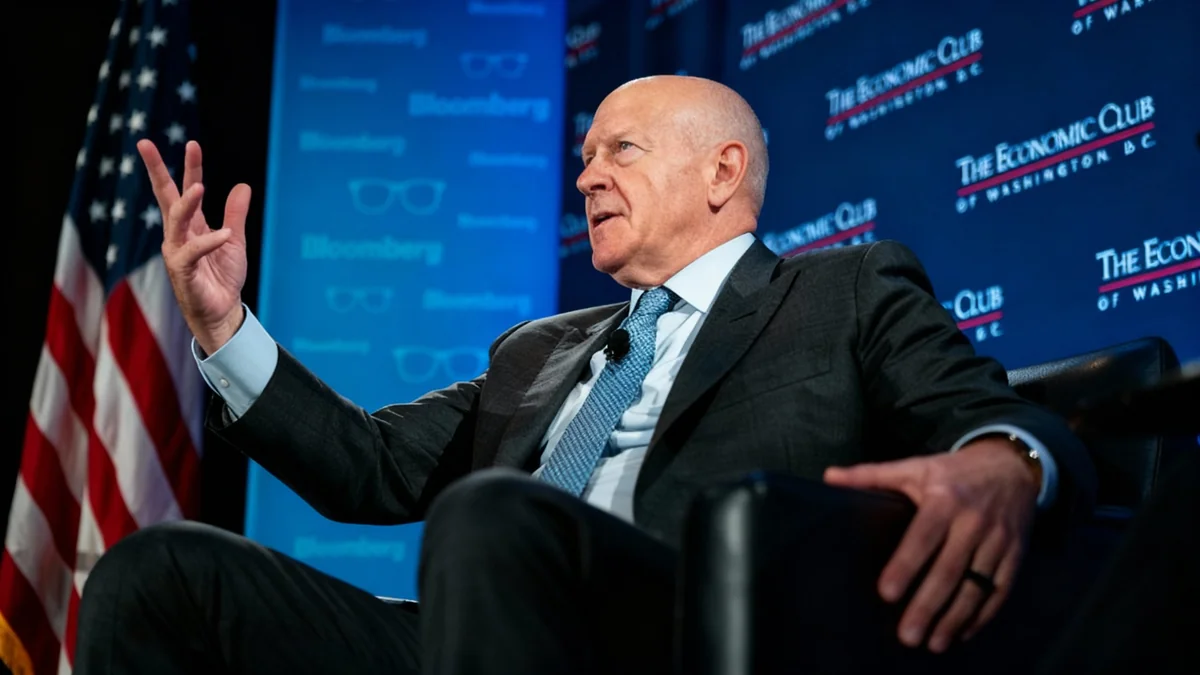Federal Reserve Chair Jerome Powell has drawn a clear line between the current surge in artificial intelligence investment and the speculative dot-com bubble of the late 1990s. Speaking after a recent policy meeting, Powell asserted that today's AI-driven growth is fundamentally different, built on companies with tangible profits and viable business models.
His comments provide a significant endorsement from the nation's top central banker, suggesting the multi-hundred-billion-dollar AI build-out is a genuine economic engine rather than a fleeting, speculative frenzy. Powell emphasized that the firms leading this charge are profitable and their growth is not primarily fueled by low interest rates.
Key Takeaways
- Fed Chair Jerome Powell stated the current AI investment boom is distinct from the dot-com bubble.
- He highlighted that AI companies have real earnings and business models, unlike many dot-com era startups.
- Powell sees AI investment as a long-term play on productivity, not a result of monetary policy.
- The spending is having a measurable impact on the real economy, boosting GDP and industrial power demand.
- Despite the positive outlook, Powell remains cautious about the long-term productivity gains and potential impact on employment.
Grounded in Profits Not Hype
During a press conference on Wednesday, Federal Reserve Chair Jerome Powell offered his most direct assessment yet of the artificial intelligence investment wave. He argued that a critical distinction separates the current environment from the dot-com era: profitability.
"I won’t go into particular names, but they actually have earnings," Powell explained. He stressed that the major players in the AI space are established entities with proven financial track records.
"These companies … actually have business models and profits and that kind of thing. So it’s really a different thing” from the dot-com bubble, he added.
This perspective counters the narrative that the tech sector is experiencing another asset bubble inflated by market exuberance. Instead, Powell frames the AI boom as a rational, long-term corporate strategy financed largely through existing cash flow and a belief in future productivity gains.
A Structural Shift Driven by Productivity
Powell was quick to delink the massive AI spending from the Fed's monetary policy. He noted that the investment in data centers and advanced semiconductors is not a reaction to interest rates or the availability of cheap capital.
"I don’t think interest rates are an important part of the AI or data center story," he said. "It’s based on longer-run assessments that this is an area where there’s going to be a lot of investment, and that’s going to drive higher productivity."
This view is supported by analysis from major financial institutions. Economists at Goldman Sachs recently published a note asserting that current investment levels are sustainable and that the AI boom is smaller relative to the economy than previous technological cycles.
Room for Growth
According to Goldman Sachs, AI investment currently represents less than 1% of U.S. GDP. In comparison, prior major technology cycles saw investment levels reach between 2% and 5% of GDP, suggesting significant room for further expansion.
The firm estimates that the productivity unlocked by AI could be worth an astounding $8 trillion to the U.S. economy in present value, with some scenarios projecting a potential value as high as $19 trillion. This underscores the belief that the current spending is a down payment on a fundamental economic transformation.
Real-World Economic Impact
The effects of the AI investment surge are not confined to stock valuations and corporate balance sheets. Powell noted that the spending is creating tangible economic activity across the country.
"It’s the investment we’re getting in equipment and all those things that go into creating data centers and feeding the AI," Powell remarked. "It’s clearly one of the big sources of growth in the economy."
This real-world impact is visible in several key areas:
- GDP Growth: Economists at JPMorgan have estimated that AI-related infrastructure spending could add up to 0.2 percentage points to U.S. GDP growth in the coming year. This boost is comparable to the peak impact of the shale oil boom.
- Industrial Power Demand: The massive energy requirements of data centers are pushing industrial power demand to record highs, forcing utility companies to accelerate plans for grid expansion and modernization.
- Capital Goods: The construction of new facilities and the purchase of specialized equipment like advanced semiconductors are driving demand in the manufacturing and industrial sectors.
The Energy Challenge
The rapid build-out of AI infrastructure has exposed a significant challenge: the nation's power grid. Data centers are incredibly energy-intensive, and the sudden spike in demand is straining existing capacity. This has created a secondary boom in energy infrastructure projects as utilities scramble to keep pace with the power needs of the AI revolution.
A Note of Caution on Jobs and Productivity
Despite his generally positive assessment, Powell did not offer an unqualified endorsement of AI's long-term effects. He was careful to state that the ultimate outcome of these massive investments remains uncertain.
"I don’t know how those investments will work out," he conceded, acknowledging that it is too early to declare a new era of sustained productivity growth across the entire economy. Economists widely believe that the benefits of AI will take years to fully materialize and may not be evenly distributed.
Powell also touched on a potential downside of the technology: its impact on the labor market. He observed that many recent corporate layoff announcements have cited AI as a factor, suggesting the same technology driving investment could also suppress job creation.
This presents a complex challenge for the Federal Reserve, which has a dual mandate of maintaining price stability and achieving maximum employment. Powell noted that recent data suggests job growth, when adjusted for statistical anomalies, is already slowing to near zero. The widespread adoption of AI could add further pressure to the labor market, an outcome the central bank will be watching closely as it navigates the economic landscape ahead.





